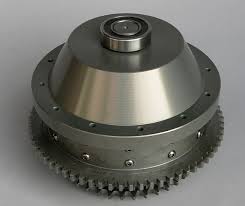The three principal types of anodizing processes are chromic processes, in which the electrolyte is chromic acid; sulfuric processes, in which the electrolyte is sulfuric acid; and hard anodic processes that use sulfuric acid alone or with additives. Other processes, used less frequently or for special purposes, use sulfuric acid with oxalic acid, phosphoric acid, oxalic acid, boric acid, sulfosalicylic acid, sulfophthalic acid, or tartaric acid.
MIL-A-8625 is the model for anodizing specified for Military products & Aerospace products. Most of the existing Anodizing are based on the military specs. It enlist the broad processing conditions
The specification includes broad processing conditions for anodizing & also the acceptance criteria & specifications for the anodic coating properties such as coating thickness, corrosion resistance, sealing, light fastness, film hardness . It also enlist the standards for general appearance, workmanship, contact marks, inspection, process control, and testing.
The anodic coating types and classes are:
Type I Chromic acid anodizing (conventional)
Type IB Chromic acid anodizing (low voltage method)
Type IC Non-chromic acid anodizing (for use as a non-chromate alternative for Type I and IB coatings)
Type II Sulfuric acid anodizing (conventional)
Type IIB Sulfuric acid anodizing (for use as a non-chromate alternative for Type I and IB coatings)
Type III Hard anodize
Class 1 Non-dyed
Class 2 Dyed
Types I and IB are used when outstanding corrosion resistance, paint adhesion, and fatigue resistance are required.
Type II & III are widely & commercially used.
1. Type I: Chromic Acid anodizing
This is the oldest Anodizing process and is nearly obsolete (except in Aerospace, Defence & very specific requirement) today as the corrosion resistant is not as strong as sulfuric acid anodizing. Also chromic acid is carcinogenic and its use is harmful to the environment. Let us know if you require the specific anodizing we don’t do it and it is hardly done in Industry but we can arrive at an solution by understanding your requirement.
Type II: Sulfuric Acid anodizing
Sulfuric acid is the most widely used Anodizing to produce anodized coating. Coatings of moderate thickness 1.8 μm to 25 μm are done in Type II. Dyeing can can be done in Type II and hence the classification of Class 1 for Non-dyed and Class 2 for dyed.
Type III: Hard Anodizing
Hard Anodizing is done in Sulfuric acid bath only but here the thickness of the
coat is between 13-150 μm. This is achieved by doing the anodizing in refrigerated tank with higher voltage and current. It requires more process control then Type II.
Color will vary from light tan to black depending on alloy and thickness.
We provide Type II Class 1 & Class 2 Anodizing and Type III Anodizing.

